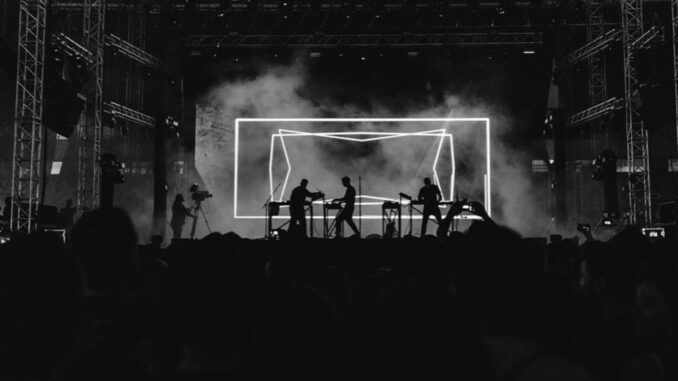
Who Started Popular Music? Tracing the Origins and Evolution
Popular music is one of the most influential cultural forces in the world today. From chart-topping hits on streaming platforms to songs played in movies, commercials, and social media, popular music dominates our daily lives. But who started popular music? While it’s difficult to pinpoint a single person or moment that gave birth to this genre, popular music has evolved over centuries, shaped by different cultures, technological advancements, and influential artists.
This article will explore the origins of popular music, tracing its development from early folk traditions to the modern pop stars who define today’s global sound.
What is Popular Music?
Popular music refers to songs and genres that have widespread appeal, often characterized by catchy melodies, relatable lyrics, and high production quality. Unlike classical or traditional music, popular music is created for mass consumption and is heavily influenced by trends, technology, and commercial interests.
Key Characteristics of Popular Music:
a. Mass appeal and accessibility
b. Simple and memorable melodies
c. Influenced by technology and commercial markets
d. Frequently played on radio and streaming platforms
e. Emphasis on individual artists or bands
The Early Roots of Popular Music
1. Folk and Traditional Music
Before the rise of recorded music, folk and traditional music served as the earliest forms of popular music. These songs were passed down orally through generations and reflected the culture and daily life of different communities.
Examples:
a. American folk music (influenced by European and African musical traditions)
b. Celtic ballads from the British Isles
c. African drumming and rhythmic styles that later influenced blues and jazz
2. Minstrelsy and Early Commercial Music (19th Century)
Minstrel shows and vaudeville performances in the 1800s helped shape what would become popular music. While these performances often had controversial racial implications, they played a significant role in blending musical influences from different cultures.
Stephen Foster, one of the first commercially successful songwriters, is often considered one of the pioneers of American popular music. His creations, such as “Camptown Races” and “Oh Susanna,” were widely recognized and showcased across the United States.
The Birth of Modern Popular Music (20th Century)
1. The Rise of Jazz (1920s-1930s)
Jazz played a pivotal role in the evolution of popular music. Originating from African American communities in New Orleans, jazz combined blues, ragtime, and swing to create a new and exciting sound.
Key Figures:
a. Louis Armstrong (trumpet virtuoso and jazz innovator)
b. Duke Ellington (composer and big band leader)
c. Bessie Smith (blues singer and early pop icon)
2. Blues and Rock ‘n’ Roll (1940s-1950s)
Blues music, deeply rooted in African American spirituals and work songs, became a foundation for many popular genres. Artists like Muddy Waters and B.B. King helped bring blues to a wider audience.
Rock ‘n’ roll emerged in the 1950s as an energetic and rebellious form of popular music, combining blues, country, and R&B influences.
Key Figures:
a. Chuck Berry (pioneer of rock guitar and songwriting)
b. Elvis Presley (“King of Rock ‘n’ Roll”)
c. Little Richard (pioneering rock and soul artist)
3. The British Invasion and Pop Explosion (1960s-1970s)
The 1960s and 1970s saw a massive shift in popular music with the rise of The Beatles, The Rolling Stones, and other British bands who dominated global charts.
Pop music became a distinct genre during this period, characterized by highly produced songs aimed at young audiences.
Key Figures:
a. The Beatles ( as one of the most influential bands of all time)
b. The Rolling Stones (rock icons with blues influences)
c. Bob Dylan (folk and protest music pioneer)
4. The Rise of Disco, Hip-Hop, and MTV (1980s-1990s)
The late 20th century saw the explosion of new genres that shaped popular music:
Disco (Bee Gees, Donna Summer) dominated the dance scene.
Hip-Hop emerged in New York, led by pioneers like Grandmaster Flash and Run-D.M.C.
MTV revolutionized the music industry, making music videos a powerful tool for artists.
Key Figures:
a. Madonna (pop and dance music queen)
b. Tupac Shakur and The Notorious B.I.G. (hip-hop legends)
Popular Music in the 21st Century
1. The Digital Revolution and Streaming Era
With the rise of the internet, the way people consume music changed drastically. Napster, iTunes, and eventually Spotify and YouTube made music more accessible than ever before.
Genres like pop, hip-hop, EDM, and K-Pop dominate the charts today, with global superstars influencing millions of fans.
Key Figures:
Beyoncé (R&B and pop icon)
Taylor Swift (pop and country crossover superstar)
Drake (hip-hop and streaming era king)
BTS (leading force in global K-Pop movement)
Who Truly Started Popular Music?
There is no single person who can be credited with starting popular music, as it evolved over centuries. However, some key figures helped shape and define it:
a. Stephen Foster (early songwriter who commercialized American music)
b. Louis Armstrong (helped popularize jazz)
c. Elvis Presley (rock ‘n’ roll legend who made the genre mainstream)
d. The Beatles (transformed pop music with innovative songwriting and production)
e. Michael Jackson (redefined pop stardom with iconic performances and music videos)
Conclusion
Popular music is a constantly evolving phenomenon shaped by cultural movements, technological advancements, and influential artists. While no single individual “started” popular music, a combination of folk traditions, early songwriters, jazz musicians, rock pioneers, and modern pop stars have collectively built the music landscape we know today.
From the early days of blues and jazz to the rise of hip-hop and digital streaming, popular music continues to change, embracing new sounds and audiences. The next great transformation in music is always on the horizon, driven by the creativity and innovation of future artists.
Stay updated with more information here!
Watch music videos here.
Leave a Reply